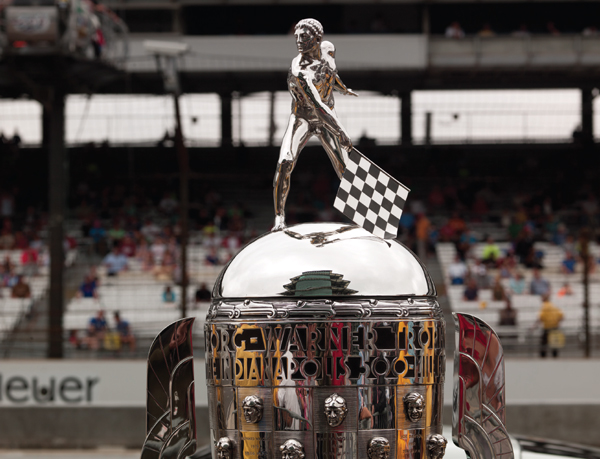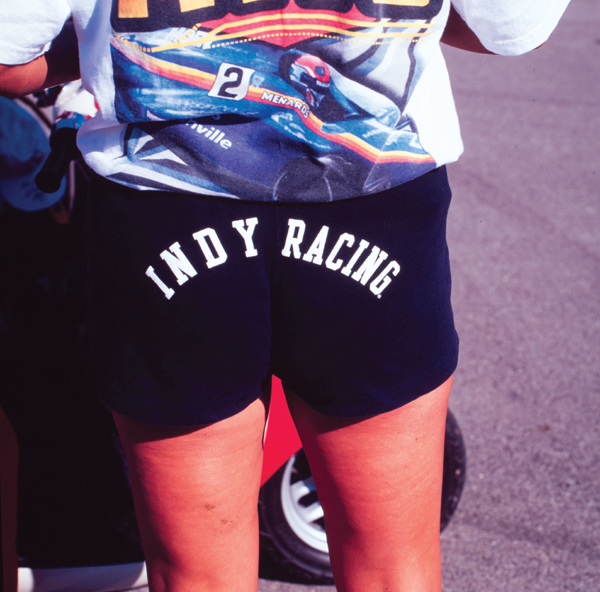
APPENDIX B
ONCE, AROUND THE TRACK

The Indy 500 has an intimate feeling about it, even though there are several hundred thousand other folks in attendance, as well. A “typical fan” defies description. Expect to meet every type from every corner of the world—even celebs!
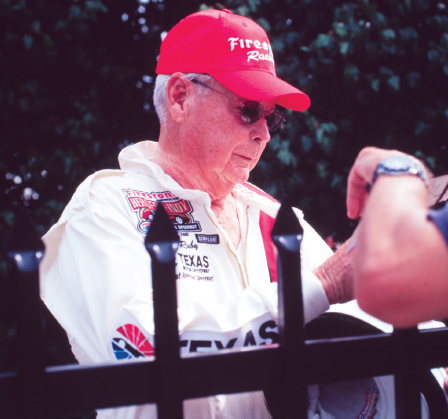
One of the great drivers who never managed to win Indy—but should have—Lloyd Ruby, shown here after competing in the Heroes of Indy event at Texas Motor Speedway. Sadly, Ruby passed away in 2009 at the age of eighty-one.
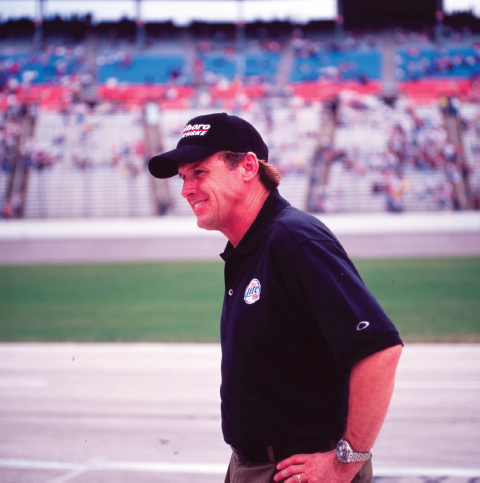
NASCAR racing great Rusty Wallace.
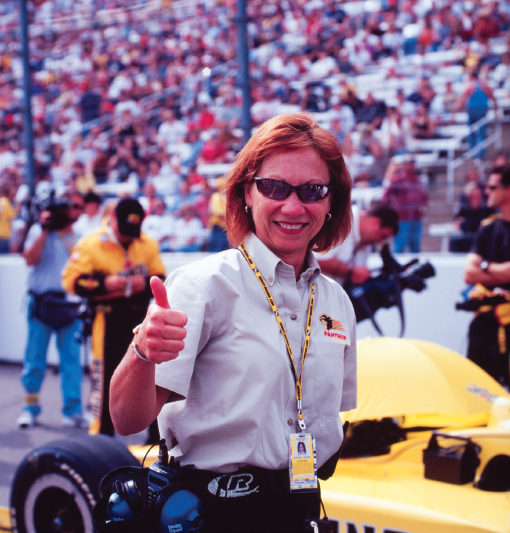
Panther Racing’s Jane Barnes.
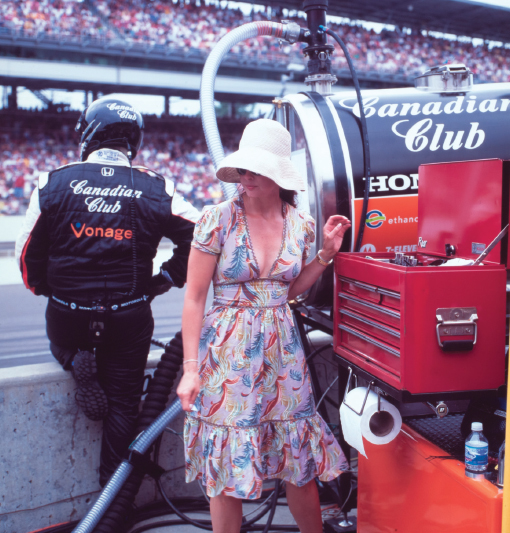
A steadfast supporter in Dario Franchitti’s pit, Ashley Judd.

Rapper/entrepreneur Chris Bridges—a.k.a. Ludacris.
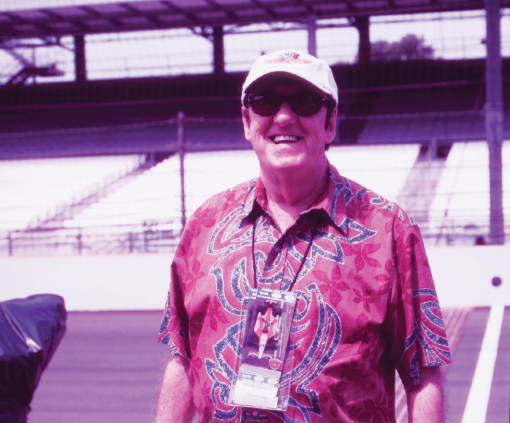
This gentleman, Jim Nabors, is beloved at Indy. People who mainly knew him as the Gomer Pyle character on The Andy Griffith Show were surprised at his rich baritone voice. On thirty-six race mornings he belted out “Back Home Again in Indiana.” He chose to let 2014 be his final performance.
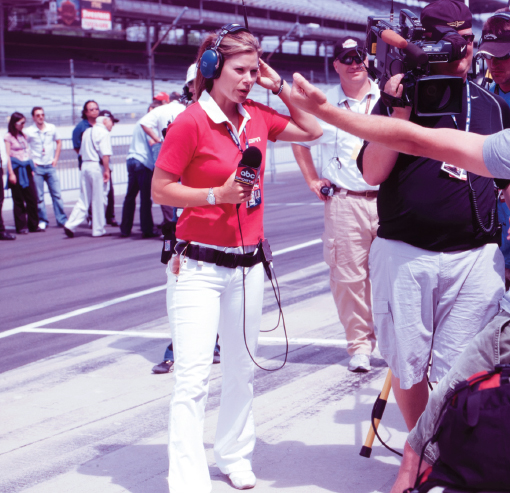
Broadcast pit reporter Jamie Little.
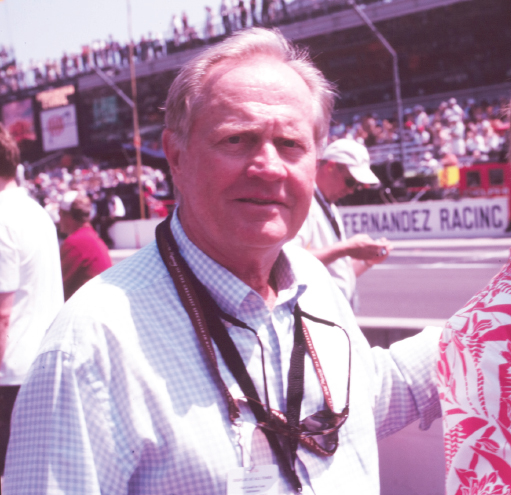
Golfing legend Jack Nicklaus.
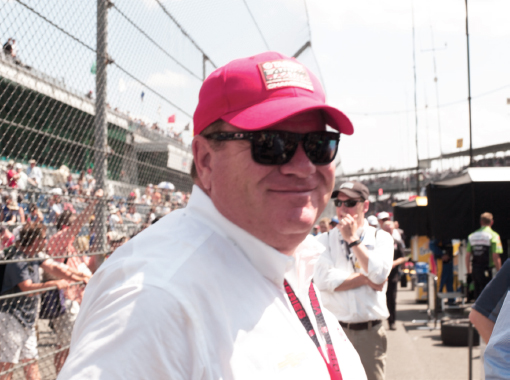
Mega-successful race team owner Chip Ganassi.

Academy Award-winning actor Jon Voight. For the uninformed—his daughter is Angelina Jolie.

Honda Motorsports’ T. E. McHale.

Another great driver who was never blessed with an Indy win, Michael Andretti.
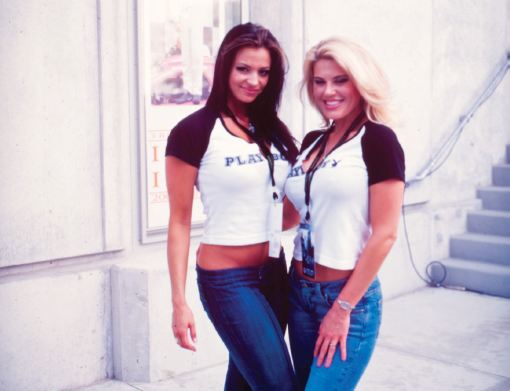
A photographer’s dream strolling the midway—two Playboy models.
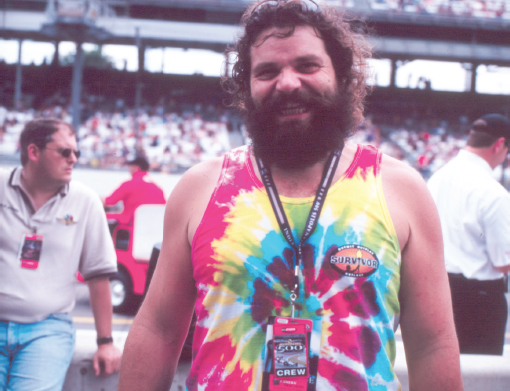
Rupert Boneham, a contestant on an early Survivor TV show.
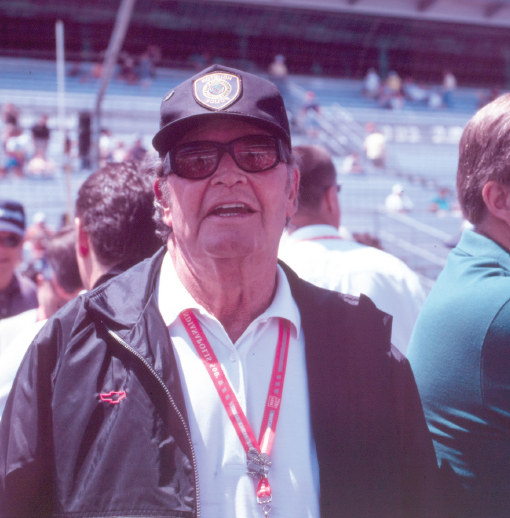
Actor and bona fide racing guy James Garner. Sadly James Garner passed away in 2014 at age eighty-six.
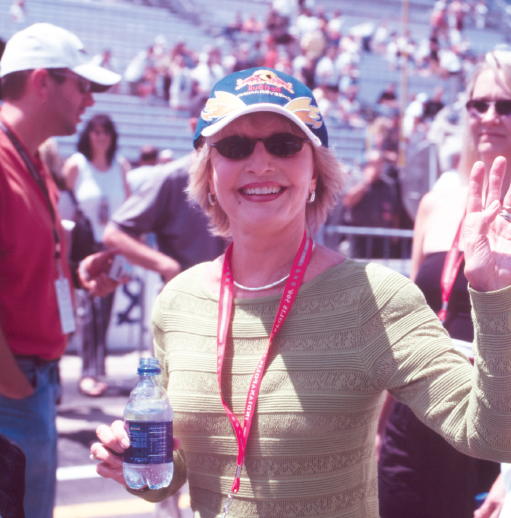
Florence Henderson is a virtual “fixture” at Indy each Memorial Day.
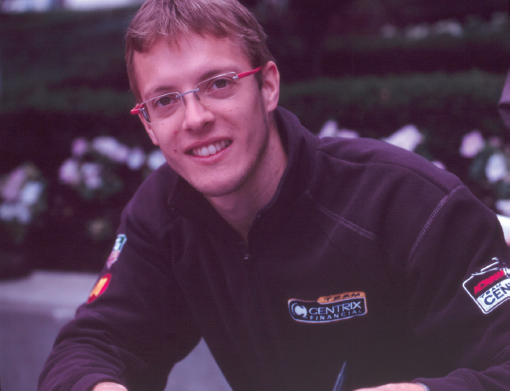
Here’s a great racer who’s deserving of a future victory at Indy, Sebastien Bourdais.
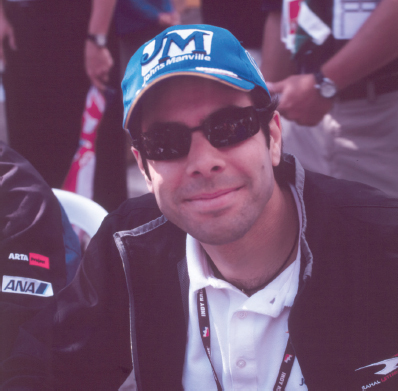
Real race fans know what a skilled driver is Vitor Meira.
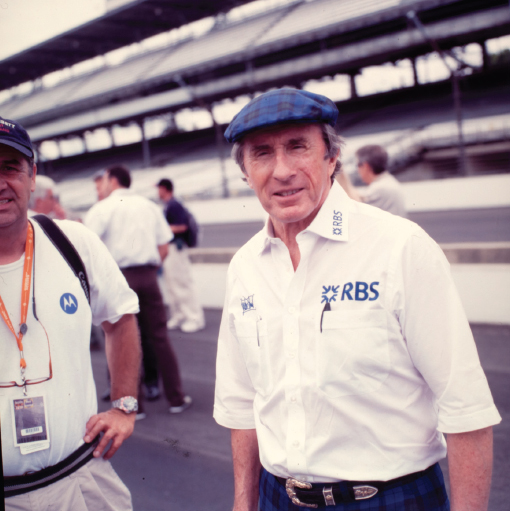
Legendary driver Jackie Stewart.
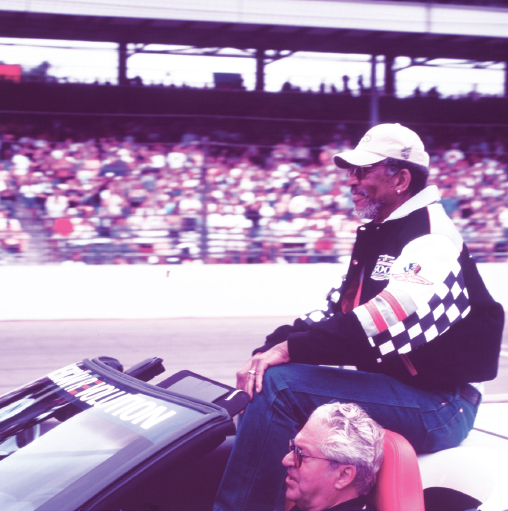
Actor Morgan Freeman in the pre-race parade of VIPs.

Panther Racing’s John Barnes.
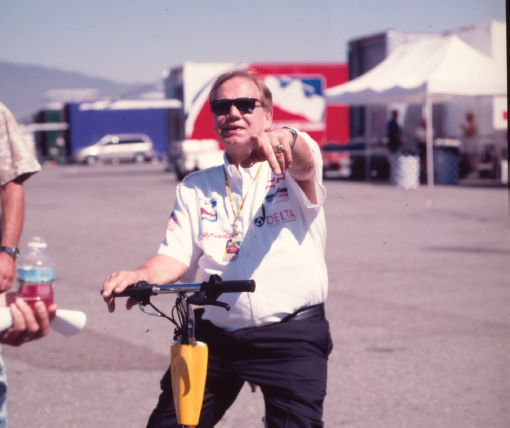
Veteran Indy racer and Indy-winning team manager Lee Kunzman.
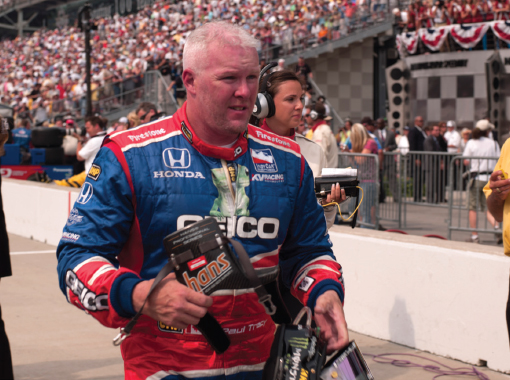
Hard-charging competitor Paul Tracy.

It will surprise no one if/when this racer, Townsend Bell, gets to Victory Circle.
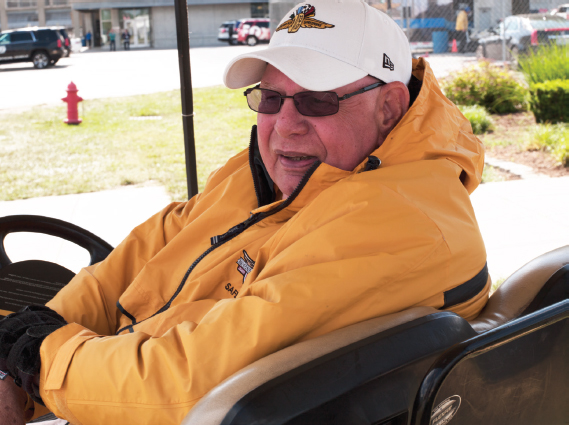
This is Dick Matlock, the most senior “yellow shirt” at the Indianapolis Motor Speedway. For over fifty years he’s been supervising the friendly, efficient (and mostly part-time) Yellow Shirts. These workers drive trams, jitneys, and golf carts; they answer fans’ questions, check credentials, run elevators, chauffeur VIPs and the infirm, and perform a thousand other tasks at the sprawling venue. Many yellow shirts are retired or take time off from their regular jobs to earn a little cash and demonstrate the friendly, firm, and fair Hoosier hospitality. Matlock’s radio crackles constantly with the oddest requests and he calmly “gets it done.”
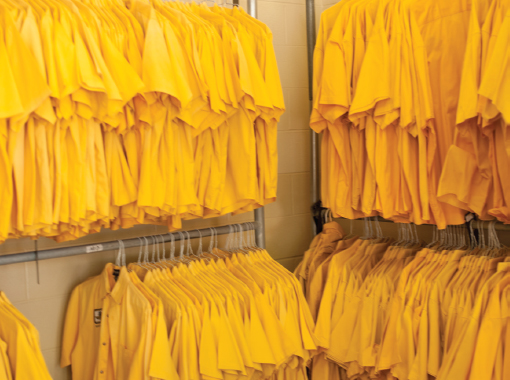

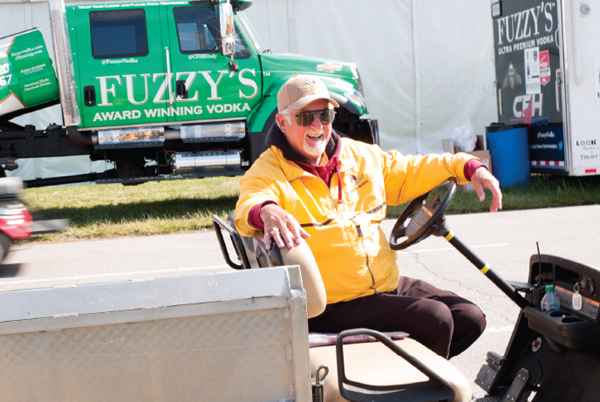
This is Dick Matlock’s comedy sidekick: Harry Bunn (not to be confused with the soccer star of the same name). If you’re parked out near the 30th Street “media overflow lot” and carry about fifty pounds of photo gear and need a free lift to an appointment in Gasoline Alley, I hope your golf-cart driver looks like this.
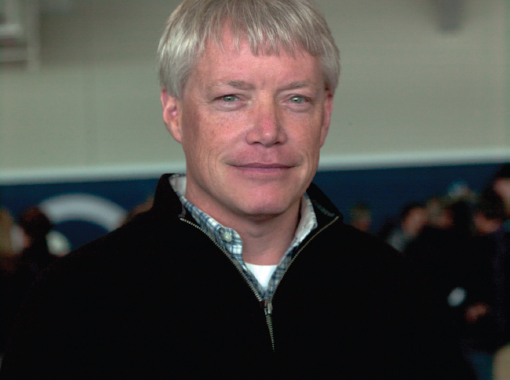
Racing reporter Curt Cavin. The Indianapolis Star journalist is the ultimate motor sports insider.
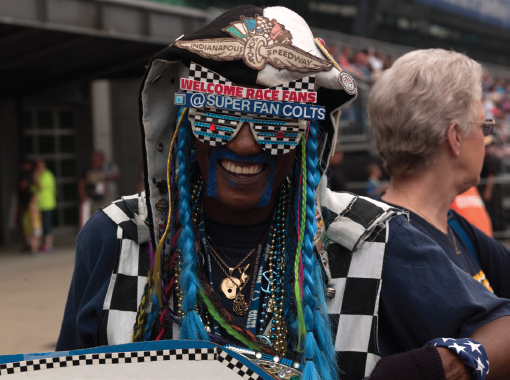
The Indianapolis “fan base” for ALL sports is easy to spot.
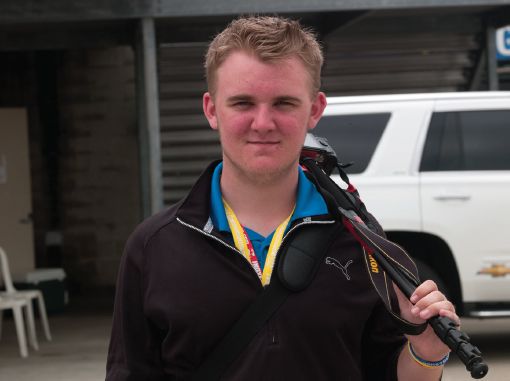
Budding motor sports reporter/photographer Ryan Kent Jr.
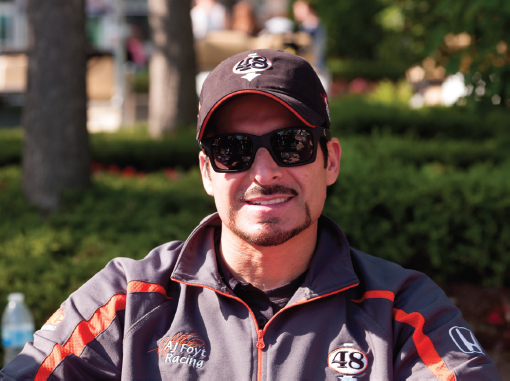
Alex Tagliani at the 2015 Indy 500. If you’re racing for A. J. Foyt in the #48 car (a tribute to Dan Gurney) it can be assumed that in A. J.’s parlance: You’re a “charger.”
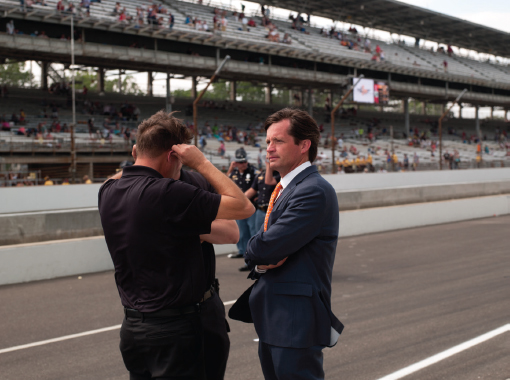
Indianapolis Motor Speedway president Doug Boles.

The young race director is setting up his “starting grid” on the Main Street sidewalk of Speedway, Indiana.

“The Captain” Roger Penske stops in his tracks to honor your request for a picture (in the mad moments following Montoya’s amazing finish—Team Penske’s 16th victory!). You decide that the image “wants in”—even if the focus is a bit out.
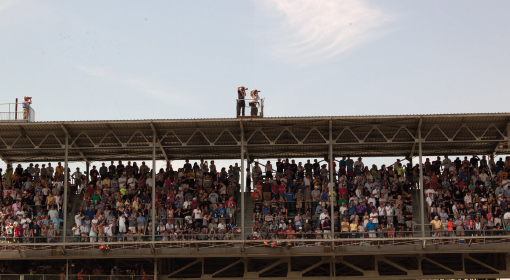
If you’re assigned to the shooting platform high above the main grandstand, it’s advised that you “pack in” everything you’ll need for the long race. It takes about ten minutes just to climb up there.
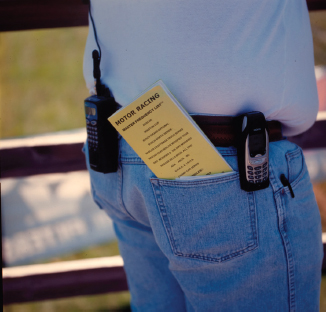
Race fans often own or rent a scanner which allows them to officially “eavesdrop” (listen only, of course) on the “message traffic” that crackles around the racetrack. Teams and drivers have assigned frequencies—some are private, some are public. For a small fee, concessionaires can quickly program a handheld scanner with the competitors of the day. Heated language between a driver and his spotter, or a driver and his race strategist, can often be heard. Teams are aware that competitors could be listening in, and may affect decoy or dummy messages to disguise actual pit strategy, fuel consumption, car behavior, and other telling conditions.
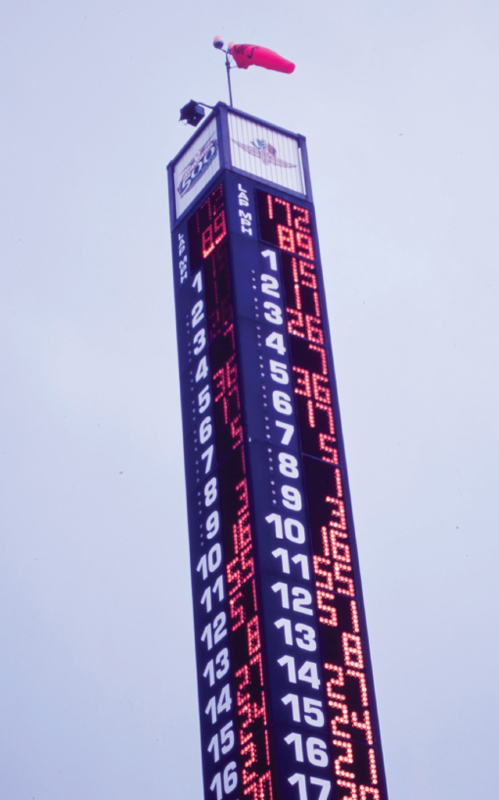
Mario Andretti mentioned that this “flag” atop the scoring pylon was one of his main reference points in “reading” the wind conditions. Now the flag has been upgraded to a proper wind sock.
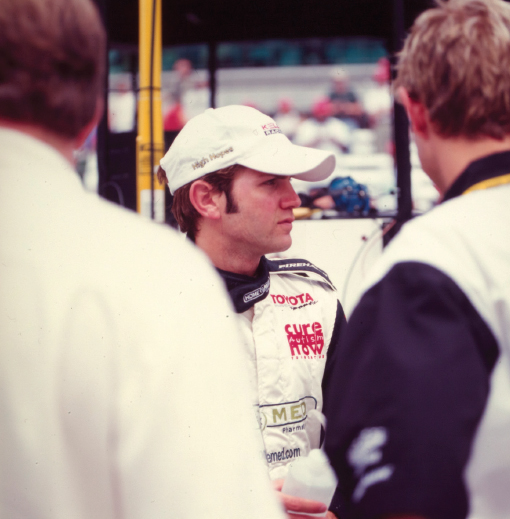
The first young driver that we lost early in this book project, Tony Renna.
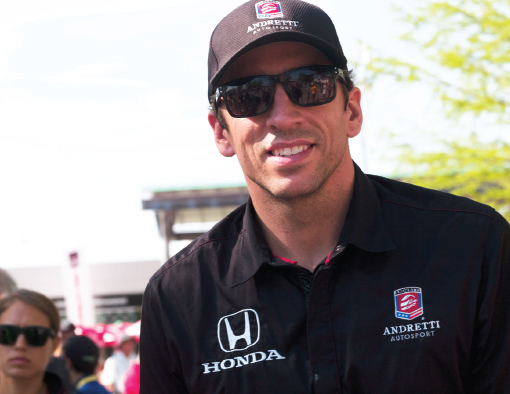
The beloved Justin Wilson at the 2015 Indy 500. A few months later he would succumb to a traumatic brain injury he suffered during a race at Pocono Raceway in Pennsylvania. His friend and fellow competitor Graham Rahal has rallied financial support from Justin’s legion of friends around the world to benefit his young family.
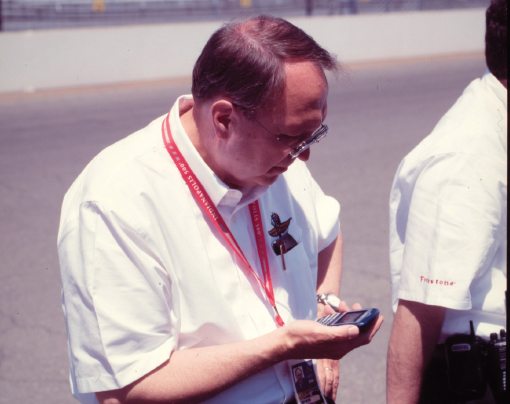
If it was Race Week, you might have expected to see smoke coming from Fred Nation’s Blackberry.
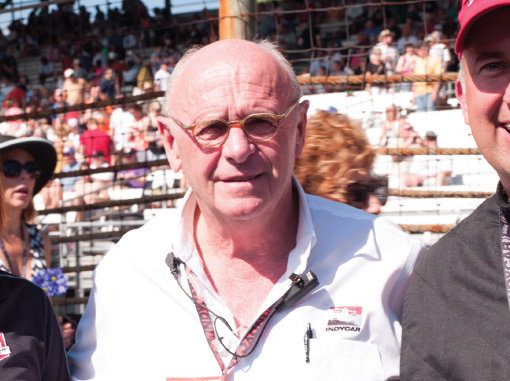
Derrick Walker is the former President of Operations and Competition, IndyCar. The Scotland native (with a good part of his career taking place in Australia) was first known for “nuttin’ and boltin’” on race cars of every type. Whether chief mechanic or race team owner, success seems to follow everything he’s touched throughout his forty-year career.
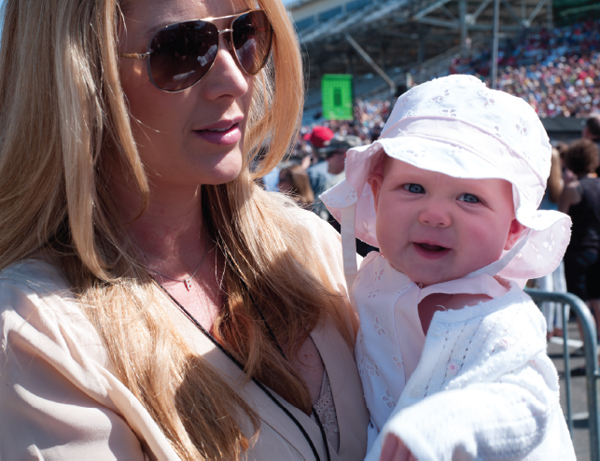
With permission from Nicole (Mrs. Ryan Briscoe), of course, this is their daughter Finley at the 2014 Indy 500.
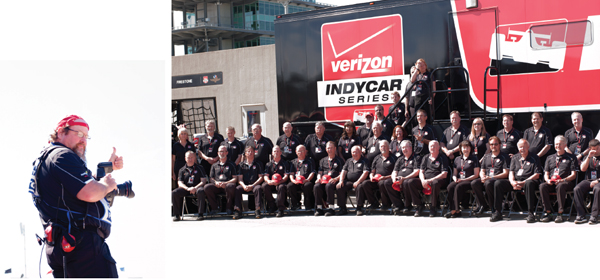
It’s always good to ask first rather than “poach” a photographer’s “set up” shot. Here (left), the thumbs-up indicates that permission has been secured. This (above) is but a portion of the men and women who look after all the “do’s and don’ts” of Indy racing. The actual 2014 “panorama” that is being captured extends considerably to the “East and West.”
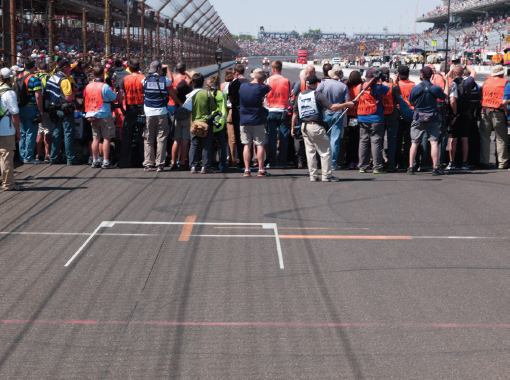
By stepping back a few paces we’re able to see the corps that waits for the 2014 winner Ryan Hunter-Reay to complete the 2½-mile victory lap and then step out of the open convertible for the various celebrations around the Yard of Bricks.
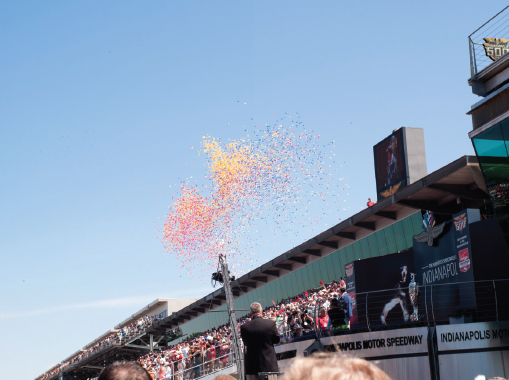
The “balloon release” is always a visual surprise shortly before race time. Every year (that we were there) the wind (fortuitously) wafts from East to West and brings the show directly across the front straightaway.

This “helium manifold” directs the balloon gas which has been stepped down in pressure to the various “filling stations” around the work tables.
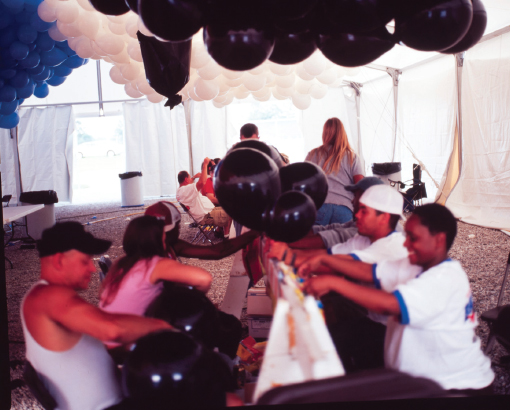
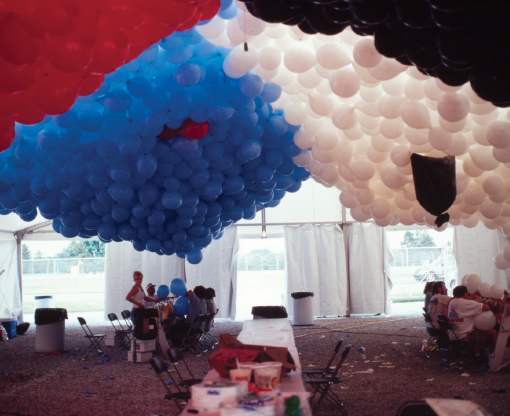
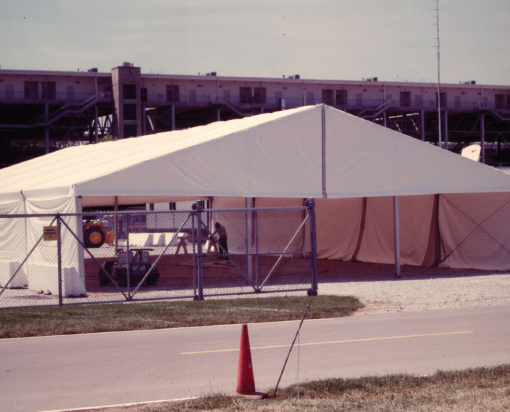
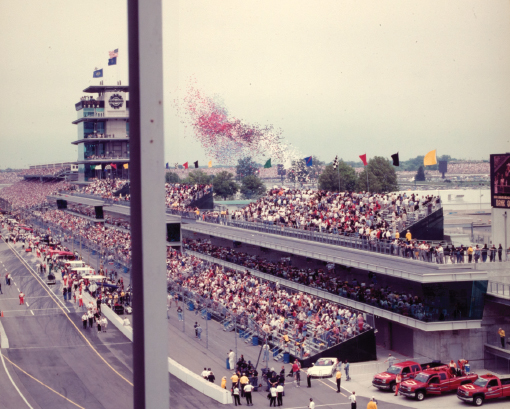
There is obviously a pattern of filling clusters of the same color. As they are filled and “tied off” they are allowed to rise to the ceiling of the tarpaulin-covered shed. There is a party atmosphere that seems to bring the same workers back year after year. On cue, on race morning, the “roof” is slid away and off they go. The balloon building (bottom left) is a temporary structure usually located on the infield behind the “Pagoda” and Media Center.
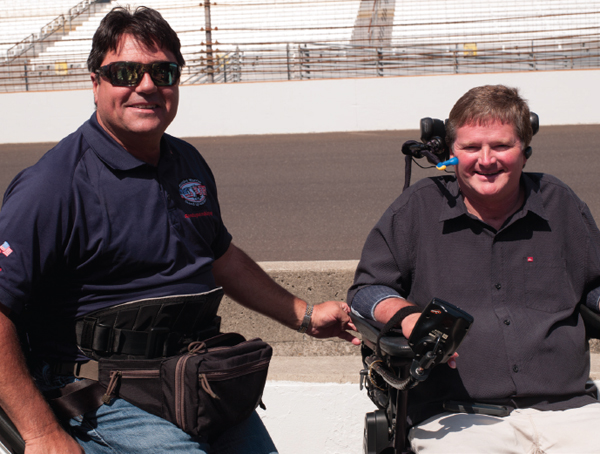
Anthony Meadows USMC (left) was injured in action in the Middle East. Sam Schmidt (right) was a rising star in Indy racing with three successive starts in the 500. A racing accident in early 2000 as he was preparing for the coming season left him a quadriplegic. His Schmidt Peterson Motorsports is a front-line contender in Indy Racing.
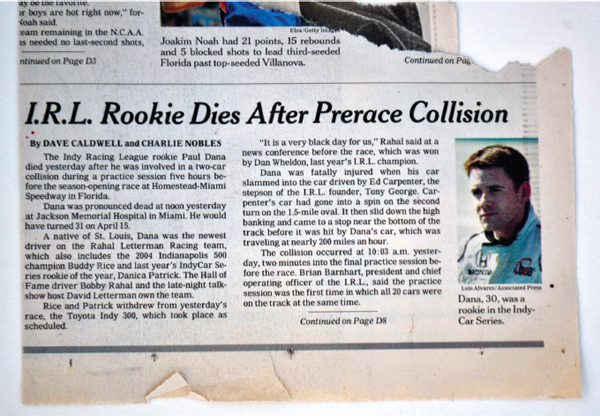
This is the clip from the New York Times noting the death of Paul Dana.
